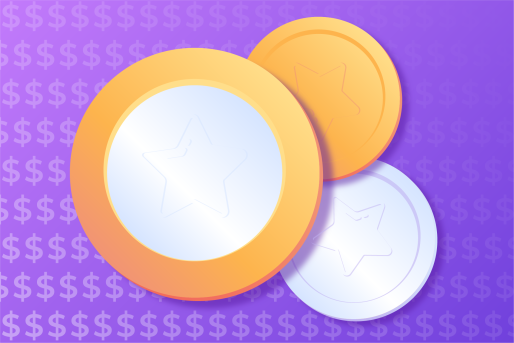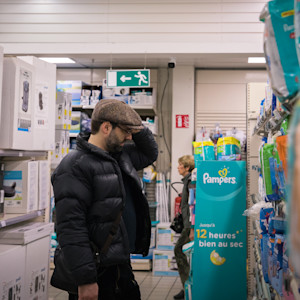Matt Grech
Content Marketing ManagerSmartling
Every piece of content is important to your brand. Every line of copy, every blog post, every tweet, every email. It all drives your end-goal and delivers value in some way.
But, that's not to say that all content is necessarily created equally. Not all content will carry the same weight, and add the same level of value to your campaigns.
That also means that not all of your content will receive the same level of attention. You might not assign a quick update email to your content writer, but you'll probably have PR professionals handle your brand messaging. Different resources are utilized to deliver the highest return on investment.
The same is true for translation. The highest quality translations result in beautiful works of art but will require the talent and attention of a professional linguist. Meanwhile, lower quality translations can be riddled with errors. So how do you know what to translate with what, and when?
By determining the value of your content, you can determine the best path forward for each individual project to really maximize the value of your translations.
What is this content for?
The easiest place to start is to ask yourself simply "what is this content for?"
How much time and attention was put into your source content, and what were you thinking about when you were putting this together?
What resources were used?
What was the budget?
There are so many variables that ultimately drive the decision of value, and these few questions don't really hit them all, but this is a solid foundation to start from.
Think along the lines of what was the overall goal of your content, and what have you already spent on it to determine what should be prioritized.
Purpose should drive performance
It's important to recognize that project will have different budgets, different requirements, different teams, experiences, and deadlines; different languages will have different needs, and different teams will have different technology stacks to work with.
As a starting point, we've identified two schools of thought when thinking about the value of your content:
Data-driven
Utilizing the information available to you to determine the highest performing content and highest value segments.
- Web traffic: Analyze the highest performing pages and languages
- Source of content: Is this from your marketing team, leadership team, or user-generated content?
Criteria based
Understanding the unique requirements and goals of your content.
- Content lifespan: Will this content be replaced or updated quickly, or will it sit on your homepage for years?
- Initial intentions: What's the purpose of this content? Where will it live, what is it meant to do: generate leads, drive first meeting bookings, etc.
To help narrow down your focus even further, it's important to always be thoughtful in every single project and to identify exactly where you're trying to drive the most performance. Consider these factors, like time, budget and resources, and use the data available to you to drive your decisions.
Anaylze for low performing content with data
When thinking about value, we can leverage the 80/20 idea as a general rule of thumb. The idea is that 80% of your outcome -- product sales, conversations started, leads collected -- is driven from by about 20% your segment, in this case, content.
Meaning: 20% of your content drives 80% of your traffic.
With that concept in mind, it would make sense to segment your content based on certain criteria:
- Webpage views
- Product popularity
- New locales/market opportunities
- Resources (like TM leverage)
Webpage views: Prioritize the top 20% of content driving the most traffic. OR, if the end goal leads, prioritize the 20% that creates 80% of your conversations.
Product popularity: Prioritize based on your sales data. Which product is the most researched in which regions? Which product is selling the best? Monthly review on product performance to identify where you can get more aggressive with lowering quality standards
New locales and market opportunities: Determine where there's not only a gap in your existing global strategy but where there is a demand. You can prioritize new content based on the potential value and ROI of that market.
Resource leverage: What linguistic assets can be used? Content that can be translated easier with less human intervention can cost less while moving faster, potentially generated even further value due to the smaller initial cost.
Prioritize content based on value criteria
Think about how rapidly your content changes, and how easy it might be to implement those changes
- Short shelf life = less focus on quality, prioritize speed
- Long shelf life = higher focus on quality, delivers more value
There's a really good litmus test to quickly determine the quality of your translation: what is the original time and energy investment into the source content? Was this something written quickly without much overall value or a massive component of your campaign?
Additionally, what is your final goal for this content: where is it going to live, who is going to see it, and what purpose does it drive?
Optimizing based on value: a real-world example
One major auto company had to translate their website and decided to send all content below a 75% TM match to machine translation with human post-edit, and anything above to a professional translator. This, of course, resulting in massive cost savings.
High-quality translation starts with high-quality source content
Ultimately there's one common theme between both these concepts: source content is absolutely critical when we talk about preparing content for translation. Good source content will result in higher quality translations.
This means creating content written with localization in mind, with considerations like avoiding idioms and cultural references and written simply and correctly.
Making it easier for translators to work means less guessing and filling in the blanks. It's about starting translation from the right foundation and setting your team up for success right from the beginning.
Approach prioritization with confidence
Put your data to work for you: data is what allows you to make informed decisions.
Think about the intentions of content: what. Is the goal, is it for a huge campaign, is this an important product release? But also consider the lifecycle of your content: will it start as marketing and move onto a sales deck?
With careful consideration, you can determine the value of your content for translation, and ultimately determine the best resource for that translation to deliver the highest ROI.
Unsure of where to get started? Chat with us today, we'll help you out.









